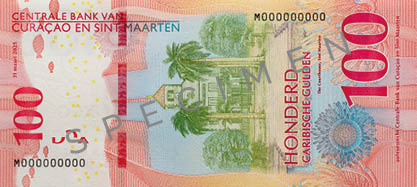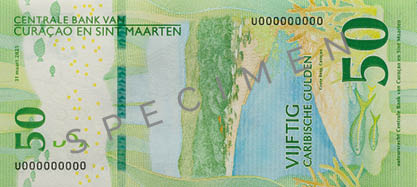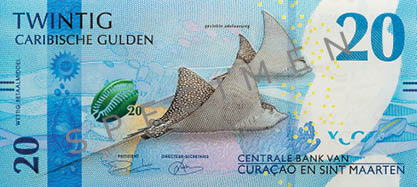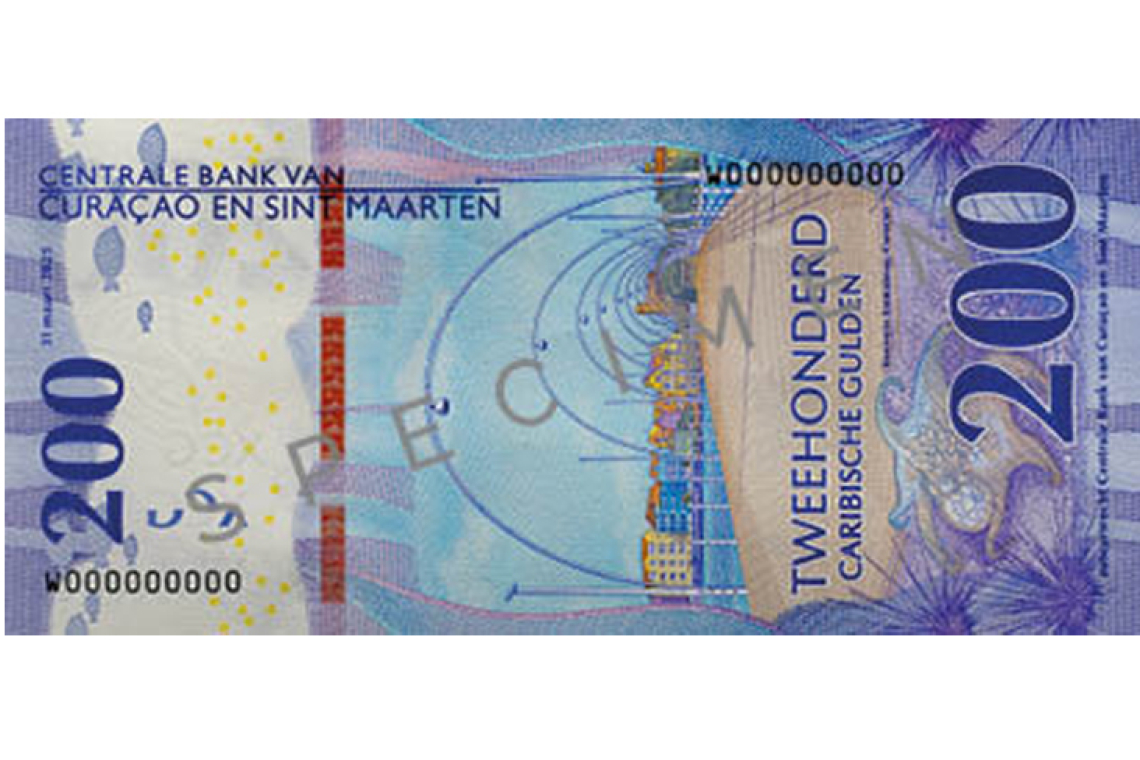The new 200 Caribbean guilder note.
MAHO--Inspired by the vibrant underwater world of St. Maarten and Curaçao, the new look of the Caribbean guilder (Cg) was unveiled for the first time at a ceremony held at the Sonesta Maho Beach Resort and Casino on Thursday evening.

The 100 Caribbean guilder note.

The 50 Caribbean guilder note.

The 20 Caribbean guilder note.

From left: CBCS President Richard Doornbosch and Finance Minister Marinka Gumbs.

A scene during the unveiling ceremony.
A similar ceremony was held in Curaçao. The banknotes and coins draw inspiration from the world under the sea. The Central Bank of Curaçao and St. Maarten (CBCS) said this serves as a metaphor for the unity shared between the countries of St. Maarten and Curaçao in its monetary union.
“The diversity of unique aquatic life serves as a reminder that, despite our distinct identities, we are connected by collaboration and shared objectives,” CBCS said.
In remarks at the unveiling ceremony, St. Maarten’s Finance Minister Marinka Gumbs suggested that the monetary union be assessed to determine whether it is working as it is intended to (see related story).
Banknotes
The front of the banknotes depicts the vibrant marine life native to St. Maarten and Curaçao, while the reverse showcases significant historical and cultural landmarks of both countries. Each Caribbean guilder banknote has a distinct colour. The colour of the 10 Cg banknote is predominantly yellow. The main characters on the front of the Cg 10 are the gray angelfish and the queen conch. The back of the note shows the historic Light House on Klein Curaçao.
The colour of the Cg 20 is predominantly blue. The front shows the spotted eagle ray and the yellow cowry, while the back gives a view of the ecologically unique Simpson Bay Lagoon.
The Cg 50 is a predominantly green banknote featuring the green sea turtle and the tellin shell while on the back the pristine Playa Kenepa Grandi Beach is depicted.
The spotlight parrot fish and the common music volute appear on front of the red Cg 100 banknote, while the back shows the Courthouse of St. Maarten.
The Cg 200 is predominantly purple with the longsnout seahorse and the giant tun shell adorning the front and the iconic Queen Emma Bridge on the back.
Coins
Caribbean guilder coins have similar, but distinct designs for Curaçao and St. Maarten. These sets will circulate interchangeably on both islands. The Cg 5 and the Cg 1 coins show the effigy of the King, along with his name Willem-Alexander and the words Koning der Nederlanden (King of the Netherlands) on the obverse. The reverse of the St. Maarten Cg 5 and Cg 1 coins show the national coat of arms and green sea turtles, while the reverse of the Curaçao Cg 5 and the Cg 1 coins show the island of Curaçao surrounded by the Caribbean Sea, its waves formed by the word Curaçao. Two green sea turtles complement the design.
The lower denominations, 1-cent, 5-cent, 10-cent, 25-cent and 50-cent coins show the orange blossom on the obverse side. The reverse reads either Curaçao or St. Maarten. The denomination sits between the Caribbean sky and waves in the middle of a constellation of three groups of 10 pearls representing the date 10-10-10, the date on which both countries became autonomous countries within the Kingdom of the Netherlands. Two tellin shells complete the design and together with the waves and pearls form the link to the underwater world of the banknotes.
During the reveal events in St. Maarten and Curaçao, CBCS President Richard Doornbosch and Executive Director Leila Matroos-Lasten, respectively, spoke of the long journey of the Caribbean guilder project, which after five years of concentrated efforts by all stakeholders, enabled a beautiful and secure result: a new currency for the countries Curaçao and St. Maarten.
Counting down to the new currency’s introduction next year, the CBCS said it will continue to provide information on a regular basis. Among materials now available to familiarise the public and businesses on the characteristics of the new currency is the mobile application “My Caribbean Guilder”, available for Android and iOS smartphones. In addition, the CBCS launched a dedicated webpage on the new currency, available at
www.caribbean-guilder.com.
The CBCS will also start training sessions for commercial bank and retail personnel on the new banknotes and coins, contributing to a streamlined transition to the new currency from the Netherlands Antillean guilder NAf. as the Caribbean guilder banknotes and coins replace those of the former Antilles.
CBSC recommends visiting
www.caribbean-guilder.com for more information on the Caribbean guilder and to download the “My Caribbean Guilder” App via Google Play or App Store.







